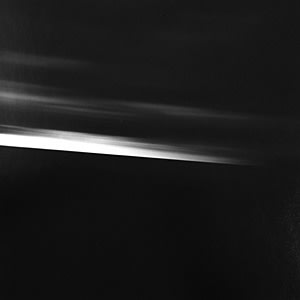Silverstein Photography is pleased to announce JOSEPH JACHNA: A RETROSPECTIVE, the first New York exhibition of photographs surveying the monumental career of the American master photographer. While several of Jachna's contemporaries at the Institute of Design, including Kenneth Josephson and Ray Metzker, have received world-wide recognition and praise, the accomplishments and artistic legacy of Joseph Jachna have yet to be fully appreciated.
Born in Chicago in 1935, Joseph Jachna received a scholarship to attend the Institute of Design in 1953, but left after one year to work at the local Eastman Kodak lab. He returned to the school in 1955, where he studied with Harry Callahan, Aaron Siskind, and Frederick Sommer, and earned a bachelor's degree in art education in 1958. Deciding to focus on photography, Jachna worked for three years on his thesis, an in-depth photography study of water. These water photographs would become the cornerstone of Jachna's photographic oeuvre.
Artists' fascination with water can be traced as far back as the Renaissance, when Leonardo da Vinci created exploratory sketches of water in motion. Jachna's interest in water as a photographic subject recalls the captivating seascapes of nineteenth century photographer Gustave le Gray. Still today, contemporary photographers, such as Hiroshi Sugimoto, endeavor to communicate water's mesmerizing powers. As Keith Davis, Hallmark Cards Inc.'s Fine Art Programs Director writes . . . "Jachna's meditative pictures of the surfaces of lakes and streams are at once technically 'straight' and highly abstract. They are moody and dark, with the 'objective' world reduced to shimmering, spectral reflections." Unlike his teacher Aaron Siskind, who is more closely allied with the abstract expressionists such as Franz Kline, Jachna's work is based more on the meditative forces of the principles of Zen:
"I have long been concerned with the line which divides things-where water reaches up to the earth, against rock or against snow. Some pictures are 'about' the line which divides light and shadow…" Joseph Jachna
Following his thesis at the ID, Jachna continued to photograph nature, most notably, his Door County Day and Night series. In several Door County Day photographs Jachna has included in the frame his outstretched arm or hand, holding a small mirror or prism. These images bring to mind a series created concurrently by Kenneth Josephson, in which he juxtaposed a hand-held postcard against his subject. In Jachna's images, the artist has cleverly called the viewer's attention to the presence of both the photographer and the camera. Technically, the mirror is an essential component of the camera body's apparatus; symbolically, the mirror is an emblem of reflection. Jachna's decision to include a fragment of himself within the landscape he photographs offers the viewer a discernable link between photographer and subject, between man and nature. Additionally, the camera's lens warps Jachna's limbs in an disconcerting way that bring to mind the distorted nudes of Bill Brandt and Andre Kertesz.
Jachna received his M.S. in 1961, the same year that Aperture showcased his photographs in a special issue of five ID graduate students (each selected by Aaron Siskind). After Callahan's departure in 1961, Jachna taught alongside Siskind until 1969, when he joined the faculty of the University. He taught photography there until his retirement in 2001. Jachna's first of several solo exhibitions was held in 1980 and in the years following his photographs have been included in group exhibitions at numerous major museums. Jachna's work is featured in the permanent collection of over forty institutions, including MOMA, the Smithsonian, SFMOMA, and National Museum of Art, Kyoto, Japan. He has received numerous awards and fellowships, including the prestigious Guggenheim fellowship (1980) and the photographer's fellowship from the National Endowment for the Arts (1976).
